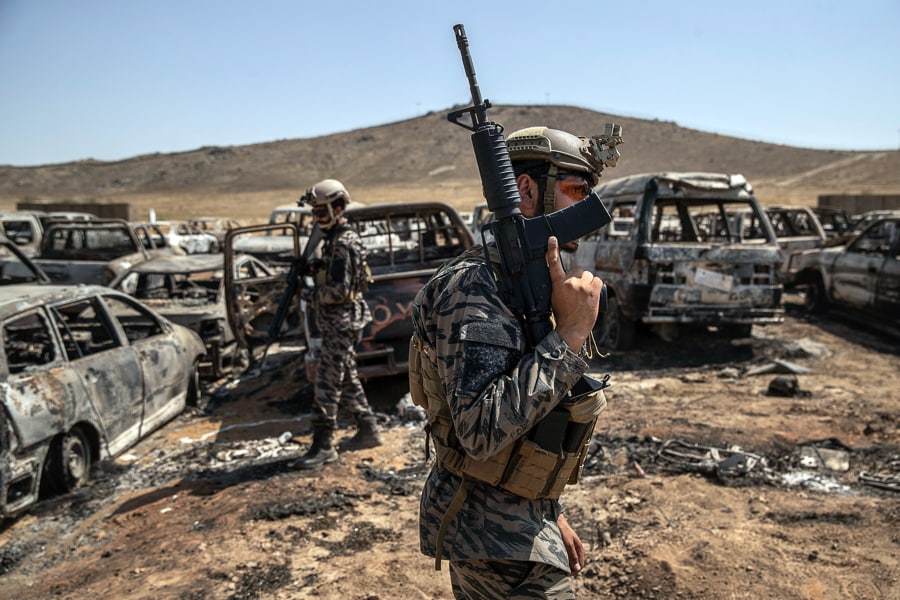
For sale now: US-supplied weapons in Afghan gun shops
Over the years, the United States provided the Afghan military with a huge array of arms and vehicles, including M4 carbines, rockets, A-29 light attack aircraft, Humvees, and copious ammunition for assault rifles and machine guns
 Members of the Taliban 313 Badri Unit, with American weapons, patrol a former CIA base in Kabul on Sept. 6, 2021. The Taliban seized troves of American weapons and vehicles from surrendering Afghan soldiers; Image: Victor J. Blue/The New York Times
Members of the Taliban 313 Badri Unit, with American weapons, patrol a former CIA base in Kabul on Sept. 6, 2021. The Taliban seized troves of American weapons and vehicles from surrendering Afghan soldiers; Image: Victor J. Blue/The New York Times
In the chaos of the American military withdrawal and the Taliban takeover this summer, thousands of American-made weapons and tons of military equipment were seized by the militants as government military bases surrendered or were overrun.
With the Taliban in power, more American weapons and military accessories are now being openly sold in shops by Afghan gun dealers who paid government soldiers and Taliban fighters for guns, ammunition and other materiel, according to weapons dealers in Kandahar province in southern Afghanistan.
In interviews, three weapons dealers in Kandahar said that dozens of Afghans have set up weapons shops in Afghanistan’s south, selling American-made pistols, rifles, grenades, binoculars and night-vision goggles. The equipment was originally provided to the Afghan security forces under a U.S. training and assistance program that cost American taxpayers more than $83 billion through two decades of war.
During the insurgency, the Taliban eagerly sought out American-supplied weapons and gear. But now much of that weaponry is being sold to Afghan entrepreneurs because Taliban demand has eased with the end of combat, the gun merchants said. They say that many gun dealers have smuggled the weapons to Pakistan, where demand for American-made weapons is strong.
The loss of tens of millions of dollars in American-made weapons and gear is yet another costly consequence of the failed, 20-year mission to Afghanistan. It ended in chaos and upheaval when the Taliban seized Kabul on Aug. 15 after crushing an Afghan military built, trained and funded by the United States.
©2019 New York Times News Service







